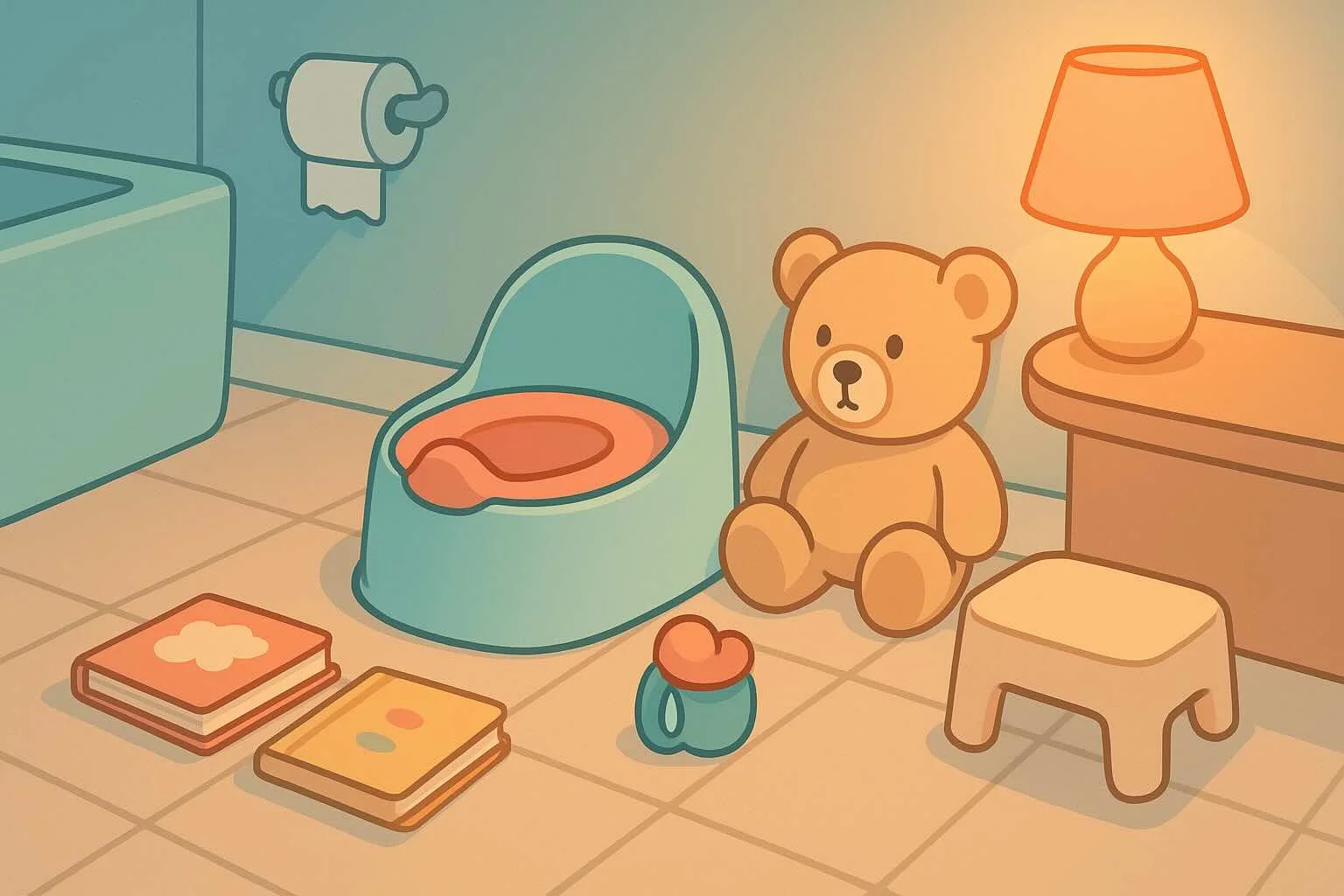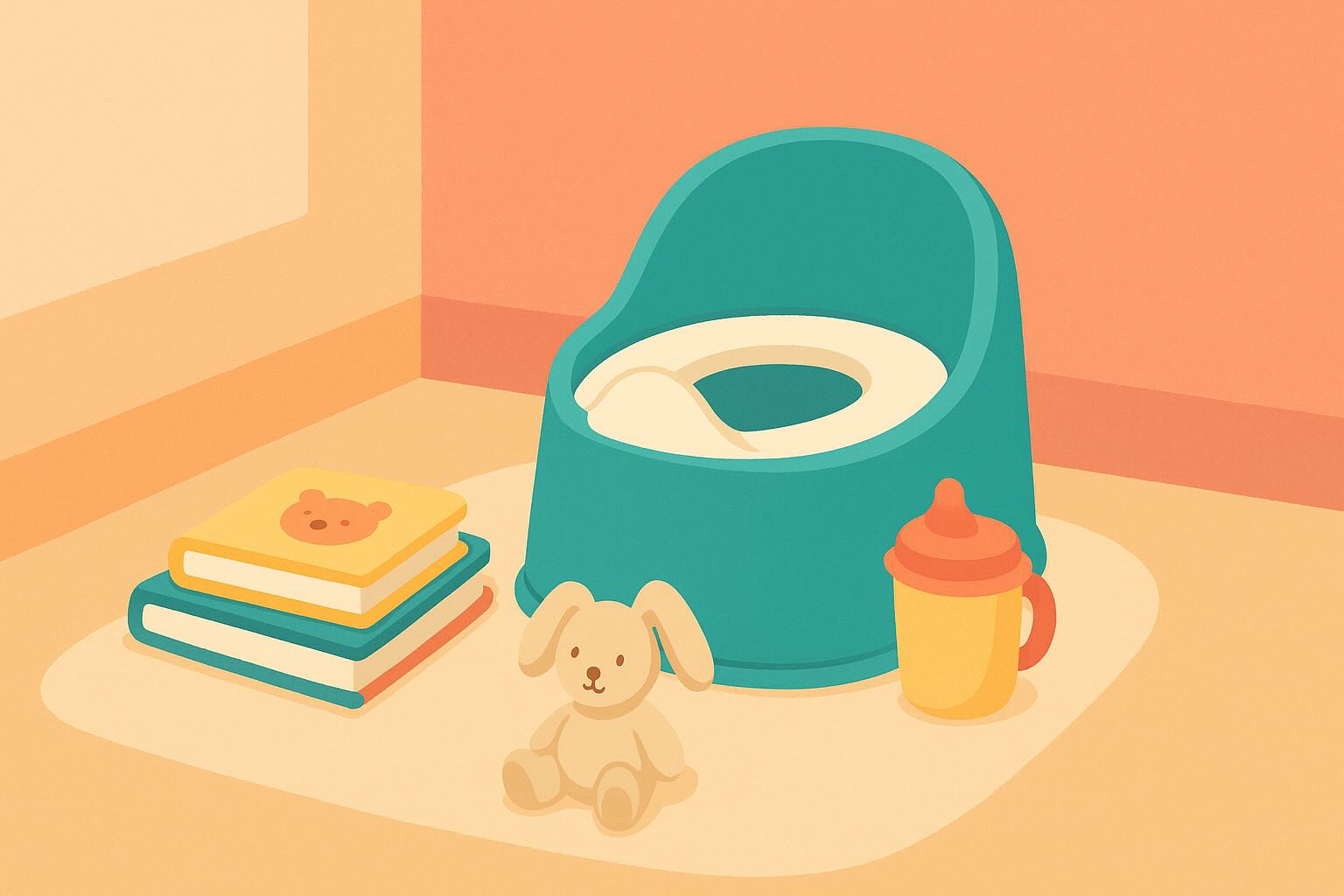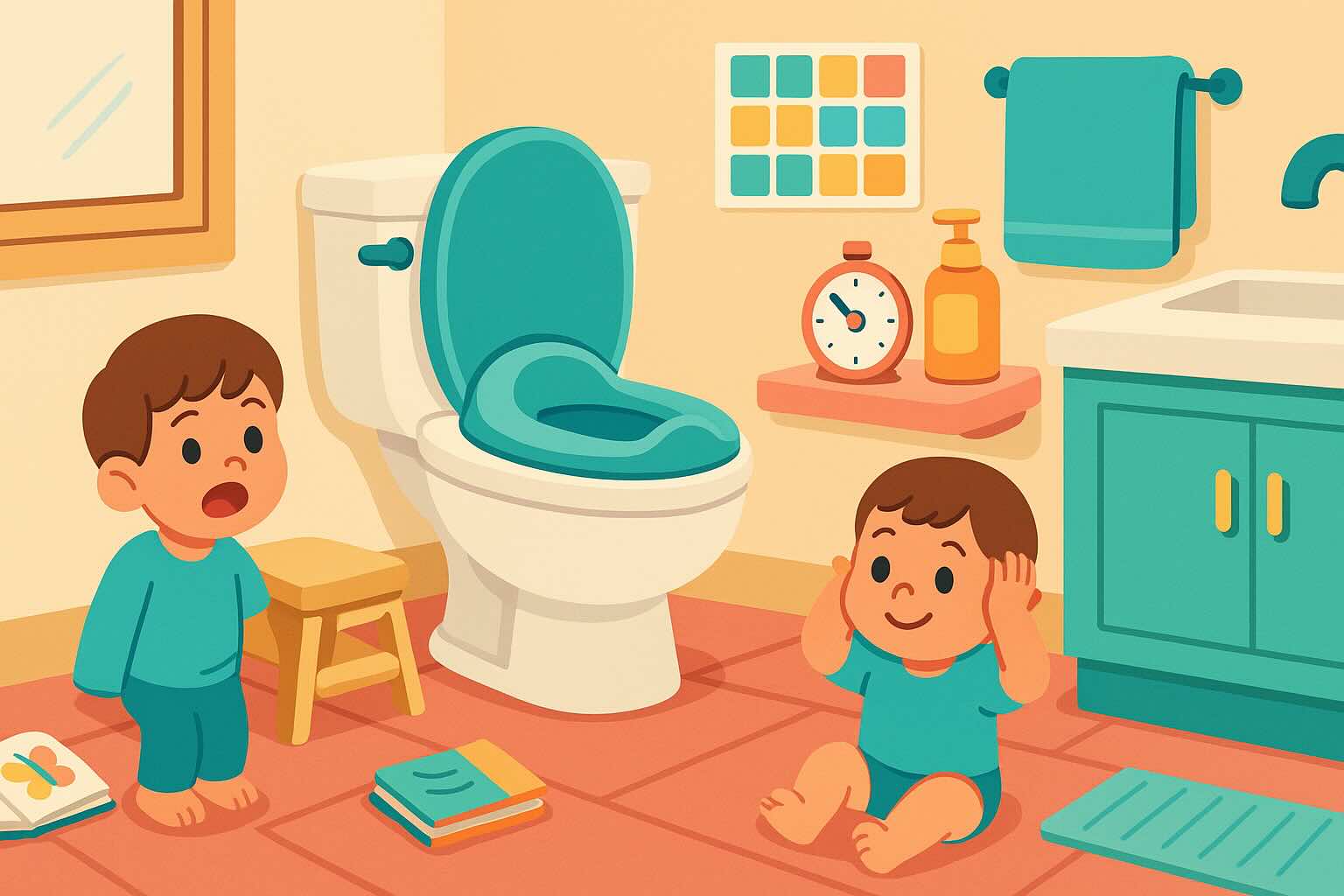Potty Training Accidents: The Neuroscience of Learning and Shame-Free Responses
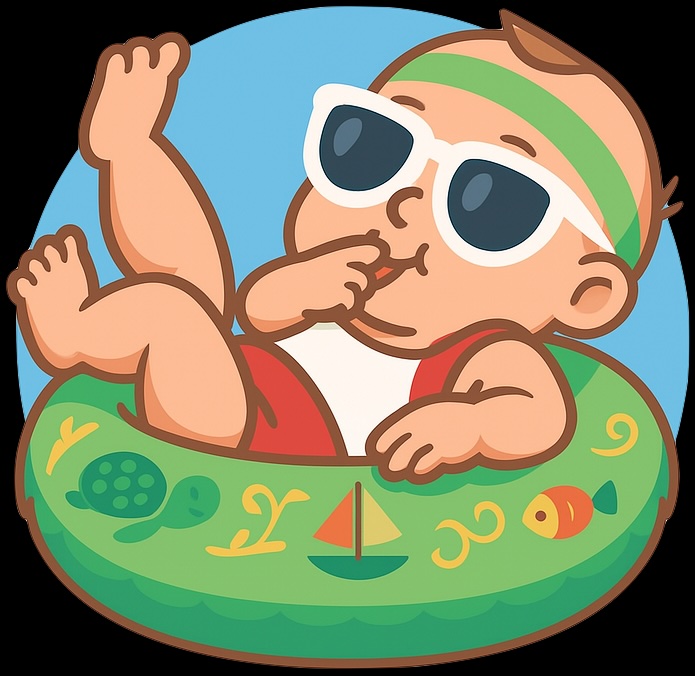
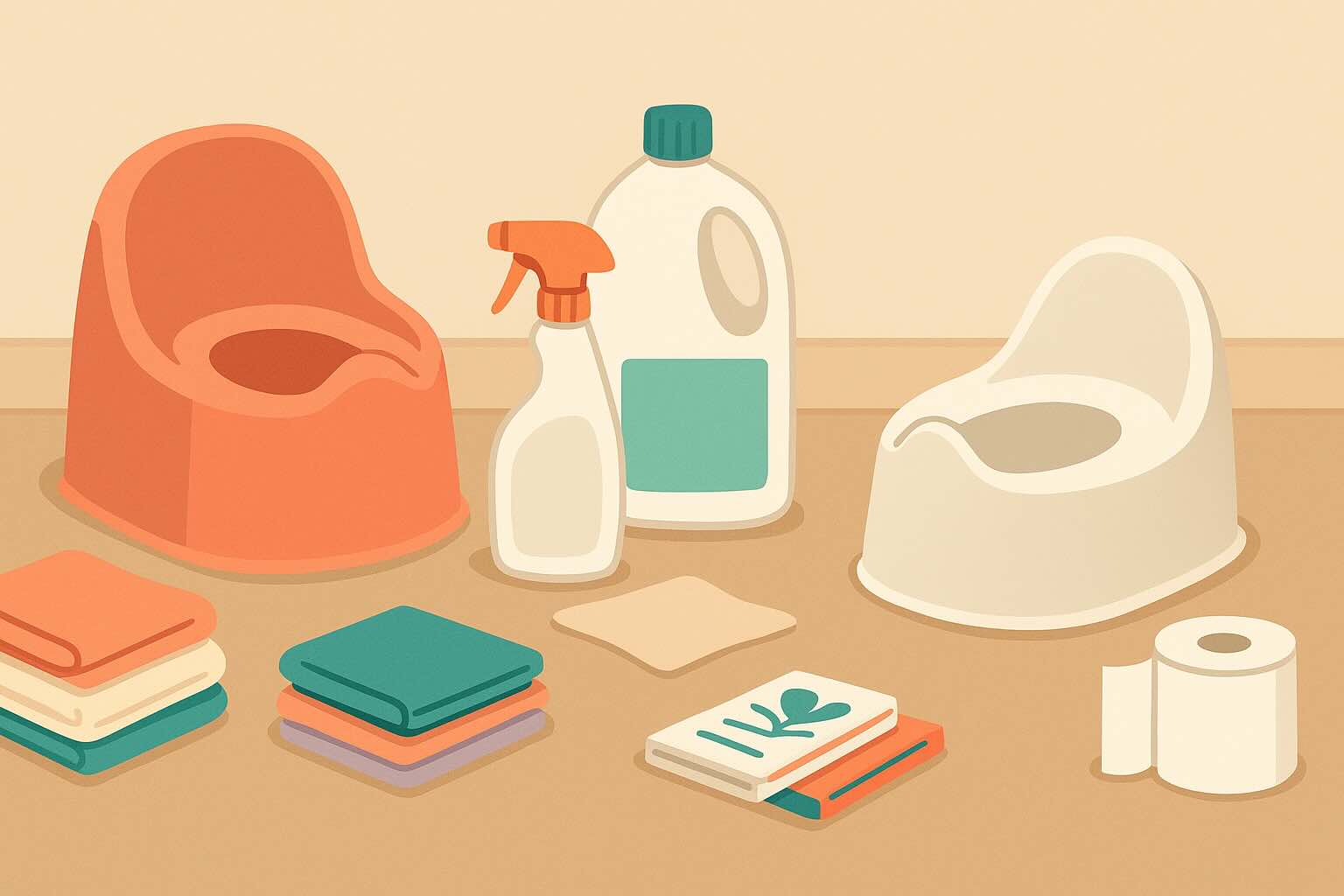
"She knows how to use the potty. She's BEEN using the potty successfully for weeks. So why did she just stand there, playing with blocks, and pee all over the floor—and not even seem to notice?!"
Because learning is messy. Literally.
Accidents during potty training aren't failures. They're not evidence that your child is lazy, defiant, or "not trying hard enough."
Accidents are an essential, neurologically normal part of how human brains learn complex new skills.
Think about the last time you learned something challenging—driving, playing an instrument, speaking a new language. You didn't master it perfectly the first time you understood the concept, did you? You made mistakes. Lots of them. And those mistakes were information that helped your brain refine the skill.
Your child's potty accidents are exactly the same thing: information for a brain under construction, building neural pathways for a complex set of coordinated tasks.
In this guide, you'll learn:
- The brain science of why accidents happen (even when they "know what to do")
- The "no big deal" response framework that prevents shame
- How to differentiate accident types (learning vs. regression vs. medical vs. protest)
- Clothing strategies that reduce stress
- When accidents signal medical concerns
- Timeline: how long accidents are normal
Research Foundation: This guide builds on insights from Dr. Becky Kennedy's Good Inside approach to understanding accidents as neurologically normal learning processes rather than behavioral failures. We've expanded this framework with specific neuroscience research, accident differentiation strategies, and practical response scripts for various contexts.
Let's start with understanding what's actually happening in your child's developing brain.
The Neuroscience of Learning: Why Accidents Are Information, Not Failure
The complex skills involved in potty independence:
What looks like "just going to the bathroom" to us actually requires your child's developing brain to coordinate:
- Interoception: Recognize internal body signals ("I feel pee coming")
- Working memory: Hold that information long enough to act on it
- Attention shifting: Interrupt current activity to address body need
- Planning: "I need to stop playing, walk to bathroom, pull down pants, sit on potty"
- Motor coordination: Actually execute all those physical steps
- Impulse control: Wait to pee until positioned on potty
- Emotional regulation: Manage any frustration, fear, or resistance
And this has to happen hundreds of times, in multiple contexts, before the neural pathways become automatic.
How Learning Creates "Accidents"
Stage 1: No awareness
- Child doesn't notice body signals
- Pee/poop just happens
- No conscious awareness before or after
Stage 2: Awareness after the fact
- "Uh oh, I peed!"—but only after it happened
- Brain is learning to recognize the sensation, but timing is off
- Accidents are normal and expected here
Stage 3: Awareness during
- Child notices as pee starts coming out
- Might stop mid-stream (bladder control developing)
- Runs to bathroom but doesn't make it in time
- Accidents still normal and expected here
Stage 4: Awareness before
- Recognizes sensation with enough warning to get to potty
- BUT easily distracted, forgets, or can't interrupt activity every time
- Occasional accidents normal for months
Stage 5: Automatic competence
- Neural pathways are well-established
- Can reliably recognize signals, interrupt activities, and execute sequence
- Accidents rare (only during illness, extreme distraction, or stress)
Timeline from Stage 2 to Stage 5: Typically 4-8 months with wide individual variation.
Key insight: Accidents at Stages 2-4 aren't failure—they're the brain doing exactly what it's supposed to do while learning.
For more on how children's brains develop skills, see our tantrum guide which explains executive function development.
The "No Big Deal" Response Framework
Your response to accidents determines whether they create learning or shame.
The Three Responses to Avoid
1. Anger/Frustration
- "AGAIN?! We JUST talked about this!"
- Heavy sighs, eye rolls, irritated tone
- Slamming cleanup supplies around
Why it's harmful: Creates shame ("my body is bad"), anxiety (which makes accidents more frequent), and fear of disappointing you.
2. Disappointed Lectures
- "You know better than this. Why didn't you tell me you had to go?"
- "Remember, we use the potty when we feel pee coming!"
- "What do we do when our body needs to pee?"
Why it's harmful: Implies the accident was preventable choice rather than developmental process. Creates pressure that amplifies stress and reduces body awareness.
3. Excessive Praise for NOT Having Accidents
- "Good job staying dry!"
- "I'm SO proud you didn't have an accident today!"
- Treats, stickers, celebrations for dry days
Why it's harmful: Makes "staying dry" a performance for your approval rather than natural body awareness. When accidents inevitably happen, child feels like they've failed you.
The Neutral "No Big Deal" Response (What Actually Works)
Step 1: Pause and regulate YOUR emotions first
Before you say anything:
- Take a breath
- Remind yourself: "This is normal learning"
- Check your tone, face, and body language for judgment
Step 2: State facts neutrally
"Pee came out."
(or) "Your body pooped."
(or) "I see you had an accident."
NOT: "You peed your pants" (focuses on them as doer/failure) YES: "Pee came out" (focuses on bodily function as neutral event)
Step 3: Invite collaborative cleanup
"Let's clean up together. Can you help me get a towel?"
(or) "We need clean clothes. Where are your pants?"
(or) "Let's get you cleaned up."
Age-appropriate involvement:
- 2-year-olds: Carry clean clothes, put wet ones in hamper
- 3-year-olds: Wipe floor with help, get cleanup supplies
- 4-year-olds: More independent cleanup with supervision
Step 4: Reflect body signals (optional, not required)
"Your body needed to pee. Sometimes it's hard to notice in time while you're playing."
(or) "You were really focused on your blocks. Your brain was busy!"
Keep it short, factual, no-pressure.
Step 5: Restate autonomy and move on
"Next time you feel pee coming, you can use the potty. Your body, your choice."
Then immediately continue with your day. No lingering looks, no checking in later, no "do you need to try potty now?"
Complete Script Example
Child has accident during play:
Deep breath. Regulate your own reaction.
You (neutral tone): "Oh, pee came out. No big deal. Let's clean up."
Walk together to get towel/cleaning supplies
You: "Can you carry the clean pants while I get the towel?"
Clean up together matter-of-factly
You: "Your body was telling you it needed to pee. Sometimes when we're having fun, it's hard to notice in time."
Finish cleanup, get child dressed
You: "All done. You can use the potty when your body needs it."
Return to play/activity as if nothing significant happened
Total time on accident: 2-3 minutes. Neutral energy throughout. No shame, no lecture, no big reaction.
Differentiating Accident Types: When It's Learning vs. When It's Something Else
Not all accidents mean the same thing. Identifying the type helps you respond appropriately.
Type 1: Normal Learning Accidents
What it looks like:
- Frequency decreasing over time (even slowly)
- Happens during transitions, new environments, distraction
- Child shows awareness after the fact: "Uh oh, I peed!"
- Responds to gentle reminders when you give them
- No pain, distress, or concerning behaviors
What to do: Continue "no big deal" approach, maintain consistency, be patient with the timeline.
Type 2: Regression Accidents
What it looks like:
- Child was previously consistent (weeks/months of success)
- Sudden increase in accident frequency
- Often coincides with life stressor (new baby, move, school start, family conflict)
- May also see behavior changes, sleep disruption, emotional dysregulation
What to do: See our complete potty training regression guide. Address the underlying stressor, increase support temporarily, remove pressure.
Type 3: Power Struggle/Autonomy Accidents
What it looks like:
- Child clearly has physical capability (stays dry for hours, uses potty successfully sometimes)
- Refuses or resists when prompted
- Accidents seem intentional or protest-based
- May occur with only one parent, at school, or in specific contexts
- Strong-willed child resisting perceived control
What to do: See our 3-year-old potty training guide for body autonomy approach. Remove all your agenda, genuinely transfer control to them, stop prompting completely.
Type 4: Medical/Physical Accidents
What it looks like:
- Painful urination or bowel movements (child cries, holds genitals)
- Blood in urine or stool
- Constant dribbling (not discrete accidents)
- Extreme urgency with no warning
- Chronic constipation with soiling
- Frequent UTIs
What to do: Consult pediatrician immediately. Don't assume behavioral causes when medical issues may be present.
Type 5: Situational/Environmental Accidents
What it looks like:
- Child is dry at home but has accidents at daycare/grandparents/new places
- Accidents during travel or disrupted routines
- Successful potty use in familiar bathroom, accidents in public restrooms
What to do: This is normal and expected. Increase reminders in new environments, scout bathroom locations, bring familiar potty seat, practice public bathrooms gradually.
Clothing Strategies That Reduce Accident Stress
The wrong clothing can add 30-60 seconds to the sequence—which is often the difference between making it to the potty and having an accident.
What to Wear During Learning Phase
✅ Easy-off bottoms:
- Elastic waist pants/shorts/skirts
- Loose fit (easier to pull down quickly)
- No snaps, buttons, zippers, belts
✅ Simple underwear/pull-ups:
- Easy to slide up and down
- Not too tight or too loose
✅ Minimal layers:
- Avoid full-body rompers, onesies, overalls
- In cold weather, top-and-bottom sets rather than one-piece
✅ Easy shoes:
- Slip-on or Velcro (not laces)
- Or barefoot/socks at home
✅ Dresses/skirts (for some children):
- Can be easier to manage than pants
- Less fine motor coordination required
What to Keep Everywhere
Multiple complete spare sets:
- Car: 2-3 full outfits
- Daycare/school bag: 2 full outfits
- Grandparents' house: 1-2 outfits
- Your purse/diaper bag: 1 outfit minimum
Spare set contents:
- Underwear/pull-up
- Pants/shorts
- Shirt (accidents can splash)
- Socks
- Plastic bag for wet clothes
Why this matters: Eliminates the logistics stress of "what do we do NOW?" when accidents happen in public. You're prepared, so you can stay calm and neutral.
Transitioning to More Complex Clothing
Wait until:
- 2-3 months of consistent success
- Child demonstrates confidence with basic clothing
- They express interest in wearing specific outfits
Then introduce gradually:
- Practice new clothing at home first
- Supervise the first few times with buttons/zippers
- Celebrate their growing independence: "You're learning how to manage all kinds of clothes now!"
When to Worry: Medical Red Flags in Potty Accidents
Most accidents are normal learning. Some indicate medical issues requiring evaluation.
Seek Pediatric Consultation If:
Urinary concerns:
- Painful urination (crying, holding genitals)
- Blood in urine (even small amount)
- Constantly wet/dribbling throughout day
- Extreme urgency ("I have to go NOW!") with no warning
- Very frequent urination (more than 8-10 times daily)
- Very infrequent urination (less than 4 times daily)
- Frequent UTIs (2+ within 6 months)
Bowel concerns:
- Chronic constipation (hard, painful stools)
- Blood in stool
- Stool withholding behaviors
- Soiling with soft/liquid stool (possible overflow incontinence from constipation)
- Painful bowel movements leading to fear/avoidance
Behavioral/developmental red flags:
- Zero awareness of bodily functions by age 4
- Accidents with no improvement over 6+ months of consistent support
- Sudden regression with concerning behavioral changes
- Suspected trauma or abuse
Nighttime-specific concerns:
- Bedwetting beyond age 7 needs evaluation (see our nighttime potty training guide)
Don't wait if concerned—better to rule out medical issues than assume behavioral causes and delay treatment.
For poop-specific concerns, see our poop withholding and anxiety guide.
Timeline: How Long Are Accidents Normal?
The question parents ask most: "How long will we be dealing with accidents?"
The honest answer: It varies, but here's what research shows:
Typical Accident Timeline
Months 1-2 of active learning:
- Frequent accidents (1-3+ per day) completely normal
- Child is in Stages 2-3 (awareness during or after)
- Success rate may be as low as 30-50%
Months 3-4:
- Accidents decreasing but still regular (1 every few days)
- Child moving to Stage 4 (awareness before, but not reliable yet)
- Success rate improving to 60-80%
Months 5-6:
- Occasional accidents (1-2 per week, then 1-2 per month)
- Approaching Stage 5 (automatic competence)
- Success rate 80-95%
Months 7-12:
- Rare accidents (during illness, extreme excitement, new environments)
- Stage 5 established
- Success rate 95%+
Beyond 12 months:
- Accidents should be rare (once every few months at most)
- If still frequent, reassess for medical/developmental concerns
Factors That Extend Timeline
- Starting before developmental readiness
- Punitive or shame-based responses
- Inconsistent approach (different rules at different places)
- Unaddressed medical issues (constipation, UTI)
- Significant life stress or trauma
- Neurodivergence or developmental delays (longer timeline is okay!)
Factors That Shorten Timeline
- Starting when truly ready
- Consistent "no big deal" approach across all caregivers
- Strategic clothing choices
- Child-led pace (autonomy approach)
- Addressing any medical issues promptly
The Bottom Line on Potty Training Accidents
Accidents aren't the enemy of potty training success—shame is.
When you respond to accidents with:
- Neutrality (not disappointment)
- Collaboration (not punishment)
- Curiosity (not judgment)
- Patience (not pressure)
...you're teaching your child:
- Bodies are learning: "My body is figuring this out. That's normal."
- Mistakes are information: "When things don't go as planned, we problem-solve together."
- You're safe with me: "Even when I mess up, my parent stays calm and helps me."
These lessons matter far more than the speed of potty independence.
Because here's what nobody tells you: Your child will be potty trained eventually. All neurotypical children achieve this skill.
But whether they internalize shame about their body, or trust in their competence and your support?
That's determined by how you respond to the accidents along the way.
So the next time you're cleaning up pee off the floor for the third time today, remember:
This isn't failure. This is a brain under construction, doing exactly what it needs to do to build a complex skill.
Your job isn't to prevent all accidents. Your job is to respond in a way that protects your child from shame while supporting continued learning.
And you're doing that. One "no big deal" response at a time.
Related Resources
- Potty Learning Complete Guide - Comprehensive overview of the entire potty learning journey
- Potty Training Regression Guide - When accidents increase after progress
- 2 Year Old Potty Training Guide - Age-appropriate accident expectations
- 3 Year Old Potty Training Guide - Managing power struggle accidents
- Potty Training Travel Guide - Preventing travel-related accidents
- Daycare Potty Requirements Guide - Handling accidents at school
Complete Potty Learning Toolkit
Readiness assessments, age-specific strategies, and practical scripts to support your child's potty learning journey.
Need personalized support?
RootWise's AI coach can provide tailored strategies for your specific situation, available 24/7 when you need it most.
Learn More About AI Coaching →